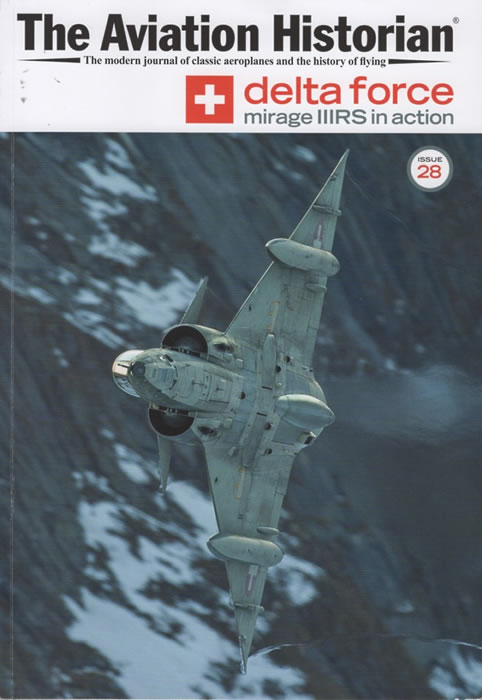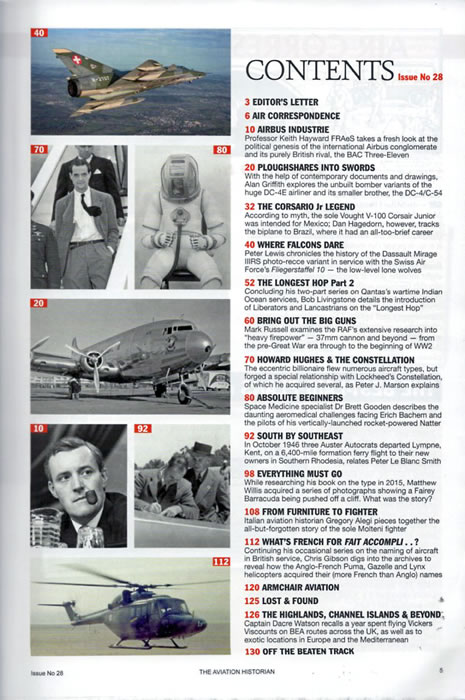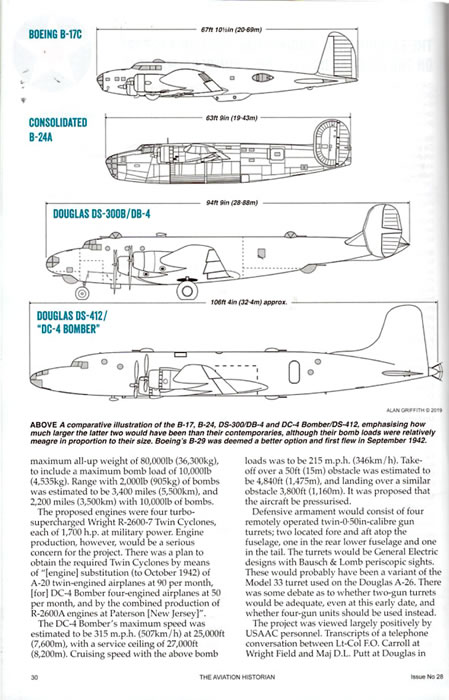The Aviation Historian

Issue 28 - July 2019
Reviewed by Steven Eisenman

HyperScale is proudly supported by Squadron.com
I was quite surprised to have received this publication from the publisher. It seems that someone from our HyperScale community suggested that it should be reviewed on Hyperscale, and recommended sending it to me.
What is even more surprising is that I have never heard of or known about this publication prior to receiving it.
But what a jewel box of information I have been missing. My loss indeed!

The articles are relatively short in length, very concise, well written, and from a variety of authoritative authors. The articles are varied both as to subject matter and time period, and are replete with excellent drawings and pictures.
A quick overview of some of the articles will exemplify the nature of this publication. The first article is about the political and business machination that created the company known as Airbus, and an early “Brexit” style event that almost sank it. What was most fascinating is that the company seems to have taken its name from the reason for its existence. In the early to mid-1960s, both the British and French aerospace industries were looking to develop a short to medium range high capacity aircraft, to be called the “airbus”.
In the next article, we shift to pre-WWII US Army Air Corps bomber development. The article is written by Alan Griffith, the well-known and respected author of “Consolidated Mess”, the guide to nose turreted B-24s. The article, entitled “Ploughshares into Swords”, is about the proposal to turn two of the most advanced civilian aircraft of the late 1930s, the Douglas DC-4E and the DC-4 into large bombers, larger than either the B-17C or B-24A. Needless to say, they failed.

In another article, Dan Hagedorn, Curator Emeritus of The Museum of Flight and an expert on both Latin American air forces and Curtiss aircraft, discusses Curtiss Aircraft’s attempt at creating an export market for the bi-plane series of Corsair aircraft. This was the Curtiss V-100, known as the Corsario Jr, because of the intended Brazilian market.
Two other articles, of the many, are probably my favorite. The first looks at the thinking behind the British development of the heavy fighter, and its end product the Defiant and Roc. It looks at the experimental adaptation of the “COW” gun, a 37mm, 1 1/ 2 pounder made by the Coventry Ordnance Works, for anti-bomber aircraft. The Vickers Type 161 is truly an amazing beast.
The other article is about the aeromedical challenges the Luftwaffe faced in the development of the manned Bachman Ba 349 “Natter” rocket interceptor. It was written by Dr. Brett Gooden, who is a Lecturer in Space Medicine at the university of South Australia. The physical consequences of the effects of the incredibly dangerous T-stoff and C-stoff fuels and the fact that the Natter could reach an altitude of 7.5 miles in a minute are fully described, as are the attempts to ameliorate them.

Without describing them all, other articles deal with such subjects as how France and the UK agreed on the names Puma, Gazelle and Lynx for a series of helicopters, the use of the LB-30 Liberator in Qantas long haul flights, Howard Hughes and the Lockheed Constellation, and the where and why a Fairey Barracuda was tossed of a cliff.
The Aviation Historian could be one of the most least known and most interesting subscription publications available. I have sworn off print subscriptions, but it is high time I rethink that. Perhaps you should also, or, if you receive subscription magazines, at least reallocate your subscription funds.
Thanks to Mick Oakey at The Aviation Historian for the review sample.
Review Copyright © 2019 by Steven Eisenman
This Page Created on 26 August, 2019
Last updated
27 August, 2019
Back to HyperScale Main Page
Back to Reviews Page
|
